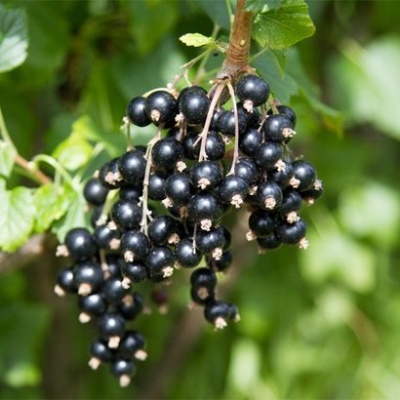
- Authors: Ogoltsova T.P., Knyazev S.D. (FGBNU All-Russian Research Institute of Breeding of Fruit Crops)
- Appeared when crossing: Bummer x Ruffle
- Year of approval: 2008
- Ripening terms: late ripening
- Growth type: medium-sized
- Yield: high
- Appointment: universal
- Berry weight, g: 1.4 (2.3 g)
- Tasting assessment: 4,3
- Escapes: growing - green, pubescent, shiny, thick; lignified - thick, evenly thinning towards the top, slightly shiny, gray with a brown top
The varieties of currant bushes developed in the 2000s can delight gardeners. But even these proven varieties must be carefully studied and correctly applied. This is why accurate and adequate information is so important.
Breeding history
The Oryol waltz was developed at the All-Russian Research Institute of Selection of Fruit Crops. The developers of this plant are breeders Ogoltsova and Knyazev. They crossed the Ershistaya and Lazytay varieties. The plant has been allowed to cultivate outdoors since 2008. Over the past time, it has already managed to prove itself quite well.
Description of the variety
Like many other varieties, the Oryol waltz blackcurrant has a universal purpose. Its bushes grow to a height of 0.4-0.8 m. Spreading is not very typical for them, and a special density is also uncharacteristic. When the shoots of the Oryol waltz grow and develop actively, they are colored green and have a characteristic fluff. Gradually, however, they will lignify.
After this point, the shoots are quite thick. From the base to the top, they become thinner and thinner. Gloss is present, but weakly expressed. A simple gray color dominates, while the top of the shoot is colored brown. The gray-green foliage consists of 5 lobes.
The surface of the leaves is rough. However, they are not too wrinkled. Slight corrugation of the leaves is also noted. The flowers are medium-sized and have a pale pink tint. Short and sparse racemes reach 5-7 cm in length, differ in a straight axis.
Characteristics of berries
The fruits of the Oryol waltz:
almost reach black saturation;
are of medium or large size;
weigh an average of 1.4 g;
can weigh a maximum of 2.3 g;
come off dry;
contain an average number of seeds;
rich in anthocyanins and catechins.
Taste qualities
The sweet and sour taste is most typical of this variety. The share of sugars is 7.6%. In this case, the titratable acidity is 3.2%. The berries contain 11.9% soluble solids. The standard tasting examination gave the crop a score of 4.3 points.
Ripening and fruiting
The plant has a self-fertility rate (59%). It is believed to be a late variety of currant. It can bear fruit during July and August. The Oryol waltz is fast-growing, while it forms a harvest for a rather long time during the season. These properties definitely make it one of the best candidates for growing in any garden.

Yield
The bush can grow up to 1.2 kg of fruit.The average productivity level of 1 hectare reaches 40 centners. The maximum recorded figure is 83 centners per hectare. This variation convincingly shows the importance of both meteorological factors and care from gardeners.
Landing
For the Oryol waltz, you need to choose sunny, but not windswept grounds. Light loam and sandy loam are welcome. Their acidity should be low, and ideally neutral. It is necessary to plant only specimens with well-developed roots. Shoots should not contain the slightest traces of decay, disease and mechanical defects.
The seedlings are supposed to be buried by 5-10 cm. The planted branches are shortened by half or even by 2/3. This will initiate the rapid growth of new shoots.

Growing and care
It is very important to harvest on time. Otherwise, he will crumble to the ground on his own. The plant's resistance to drought is quite high. Planting is watered weekly. When the heat increases, this is done twice a week.
Use a 10 liter bucket per bush for each watering. Timely watering is especially relevant during the formation of fruits and at the time of laying flower buds. It is necessary to feed the plant with organic matter at the very beginning of the growing season. At this point, a combination of minerals and organics is used. When the ground is watered, it is immediately loosened and mulched.





Currant is one of the most favorite crops of gardeners, it can be found on almost any personal plot. In order for the currant berries to be tasty and large, and the bush itself to be healthy and strong, you should properly care for, treat and protect the plant from harmful insects. It is important to recognize the signs of the disease in a timely manner and begin treatment in the early stages of plant damage.










































































